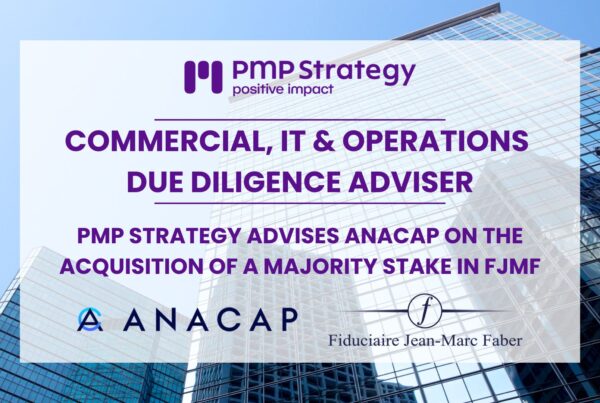With 3.5 million active users at the end of 2019, the attractiveness of neo-banks leaves no room for doubt on the French market. The number of active accounts has thus multiplied by 2.5 in 2 years to achieve a solid customer base. Since January 2019, 8 new players have been launched, including a new low-cost offer from Société Générale and Ma French Bank, a subsidiary of La Banque Postale.
- At the end of 2019, there were more than 3.5 million active neo-bank accounts in France (vs. 2.6 million when the previous overview was published in July 2019) 1
- More than 25 offers currently compete in the French market
And the movement does not stop there. Other neo-banks will be launching in the coming months with various positions: Onlyone on the individual market promises a “positive impact”, Memo Bank on the SME market which has obtained its approval as a credit institution, or Blank of Crédit Agricole in the Pro market. The launch of Blank marks the 4th New banks start (or bought) by a traditional player. For these players, the objective is to target a clientele complementary to their physical network, that is to say rather young and eager for a natively mobile solution.
Customer profiles different from those we could have imagined
Since their launches, the players have observed that beyond capturing a young clientele, the over 45s are also seduced by the promise and its complementarity with a physical network, as demonstrated by the results of the very young Ma French Bank, including 40% of its customers are over 38 years old and 70% of the 100,000 customers who have opened their accounts at a post office.
- 40% of Ma French Bank customers are over 38 years old
According to the latest overview published by IPSOS, neo-bank customers are attracted by the attractive prices, the welcome bonus and the ease of opening an account without neglecting their accounts in a traditional bank. Other elements are also appreciated by customers such as pricing independent of income conditions, attractive cost abroad (withdrawals and payments), mobile application interface, real-time transactions and notifications, autonomy in the configuration of the payment card etc …
The digital experience is no longer a differentiating criterion
Beyond the search for a clientele complementary to their retail network, traditional players have used neo-banks as an area for experimentation and innovation, which has enabled them to gradually catch up with their delays in terms of digital experience. This will no longer be a differentiating criterion in the future. Today, it is more than essential for these neo-banks to stand out from the crowd and build a positioning that is well differentiated from other neo-banks, but also from retail banking.
The example that quickly comes to mind is that of Nickel, which is well differentiated from the BNP Paribas network, unlike “Hello Bank! ”In particular due to the deeper integration between BNPP and Hello Bank. The latter has also announced the revision of its model to refocus on 3 categories of customers: self-employed, freelance workers and Millennials. A new model that aims for profitability by 2022, profitability not reached today – like many new banks.
Profitability penalized by high acquisition costs
A study published by the ACPR 2 shows that indeed, despite a solid customer base, neo-banks still have some way to be profitable. Losses created by very low prices – even free at all, which complicates the business model in terms of acquisition costs (marketing, welcome bonuses). The study was carried out long before the Wirecard scandal, which will not remain without impact on the neo-banking market and on the culture of growth. Regulators will probably be more concerned about the resilience of players who have chosen “Bank as a platform” to build their infrastructure and their offers.
Furthermore, the analysis carried out by the ACPR shows that almost all of the NBI is generated by clients with the highest income bracket (20% of the highest income); what the study does not tell us is whether this population corresponds to the oldest age group as well … However, some banks have been able to do well and generate income. This is the case of Nickel, one of the rare neo-banks (with Fortuneo) to have generated a positive result which allows it today to self-finance its international development. Several players who failed to reach a number of active customers have already ceased their activities, as was the case for C-Zam, penalized by the weight of inactive customers. Indeed, 30% of customers who bought a box have never activated it.Carrefour Banque has decided to end its marketing experience in supermarkets. Ditto also ceased its BtC activity and turned to B2B2C to provide its services to third parties under white label.
However, having an active customer base is not the only criterion for entering the circle of profitable neo-banks. This is why many new banks are undertaking a review of their business model, with the first imperative of reducing costs by reviewing welcome offers with more limited amounts. Are they wondering how to better enhance their customer base? One of the answers is increasing customer value in their portfolio and their average basket.
Increase the average basket through multi-equipment
The new banks are thus seeking to increase interactions with these customers by offering them new products and services. To offer a more complete banking range and a more established model, one voice is the development of credit, including consumer credit like the Lydia and Younited Credit partnership, or the Orange Bank strategy, or even real estate credit for generally more established players (Boursorama,). More broadly, neo-banks may be interested in developing savings through a classic offer of PEA, securities accounts but also through the preferred placement of the French, life insurance. Note, the exception of Boursorama, which by its positioning has precisely developed a savings offer before the more traditional bank (loans, payments, etc.)
The field of property and personal insurance is also an important factor of diversification for neo-banks, as has been the case for traditional banks. The expansion towards mandatory non-life insurance products is quite logical in view of the conquest of this market for retail banks on Auto or MRH products but also the ease of online / mobile subscription. Like Boursorama, which markets the “Carapass” automobile insurance product, kilometer insurance developed by Sogessur. One of the black spots of “compulsory” insurance is their low margins due in particular to strong competition.Several offers can also enter the catalog of neo-banks such as affinity such as insurance for mobile devices or pocket provident insurance, this time with much more attractive margins.
There is no shortage of solutions, but before embarking on a diversification strategy, it is important for its neo-banks to question their positioning? What are their customers expecting? What are their needs ? Customer knowledge remains the main issue for new banks which, despite their digital skills, can be penalized by their secondary bank status and partial financial knowledge of multi-bank customers.
Finally, the current health context is an opportunity for new banks to respond quickly to customer needs and end-to-end digitalization. Neo-banks will be able to provide new services to meet the needs that have emerged through the explosion of online shopping: security (virtual payment card, dynamic CVC, etc.), cash-back and payment insurance (parcel not received, …). It is also an opportunity to improve their customer experience via concierge or remote advice solutions or to support urban mobility (NVEI, etc.).
Rhalid Bouakhris, Senior Consultant PMP





